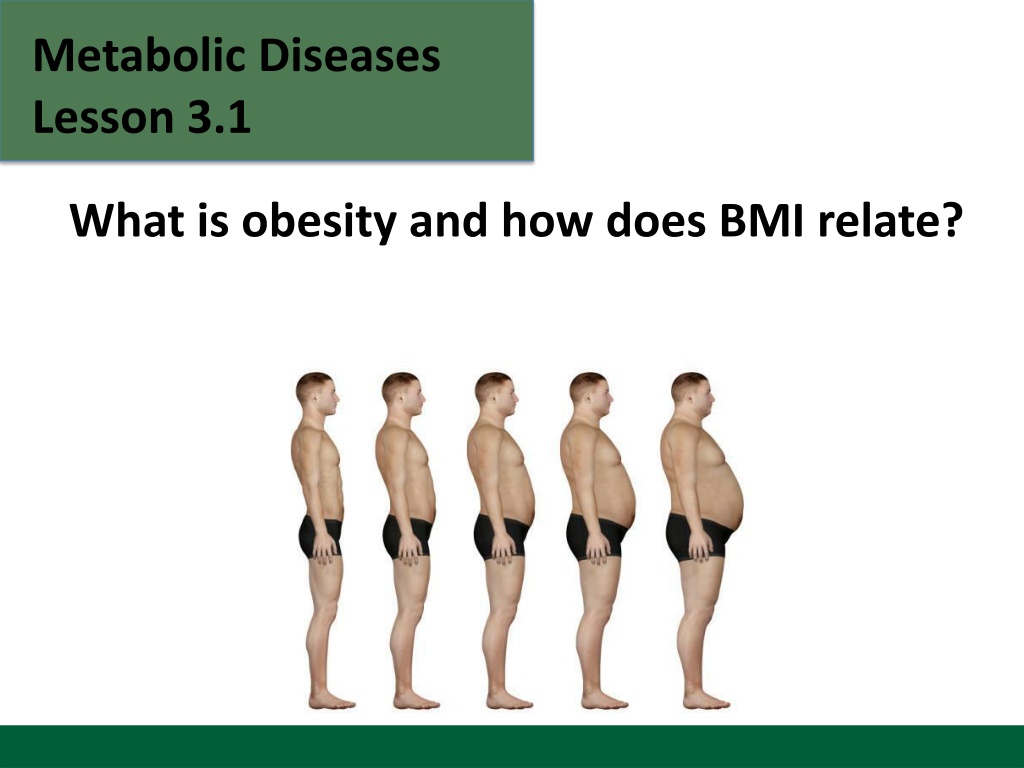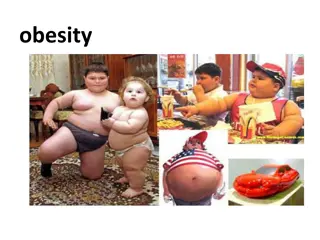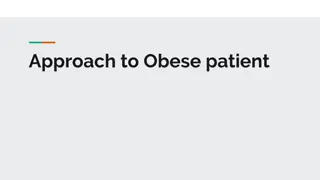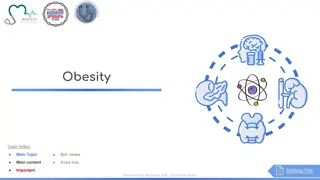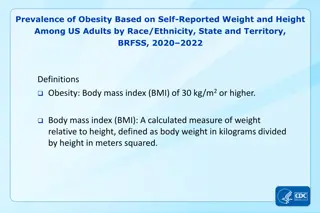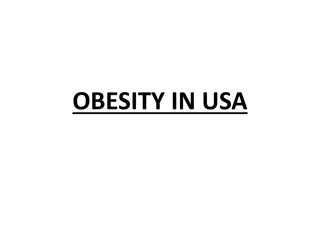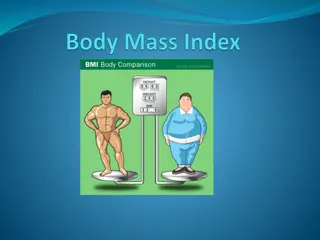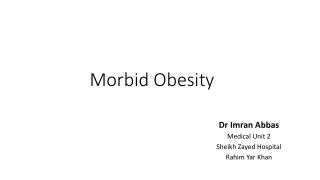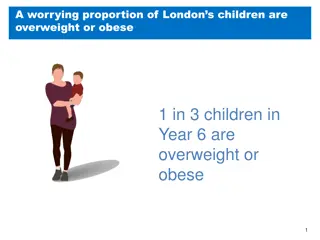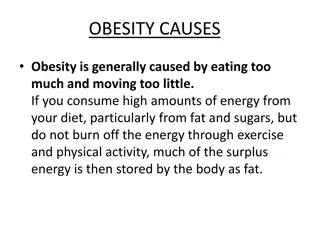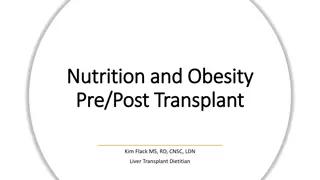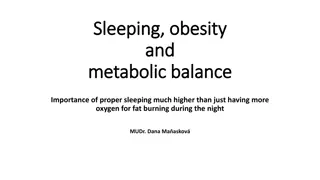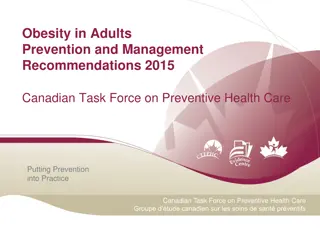Understanding Obesity: BMI and Its Health Implications
Obesity is a widespread health concern with various chronic conditions associated with it. This lesson delves into the definition of obesity, the role of BMI, and the health risks linked to excess body fat. It covers the rising rates of overweight and obesity in the US, the impact on different organ systems, and methods of measuring body composition.
Download Presentation

Please find below an Image/Link to download the presentation.
The content on the website is provided AS IS for your information and personal use only. It may not be sold, licensed, or shared on other websites without obtaining consent from the author. Download presentation by click this link. If you encounter any issues during the download, it is possible that the publisher has removed the file from their server.
E N D
Presentation Transcript
Metabolic Diseases Lesson 3.1 What is obesity and how does BMI relate?
Do Now What IS obesity? Body fat greater than 25% for men and 32% for women. Body mass index (BMI) over 30
Do Now Why is obesity a health concern? What chronic problems might it lead to?
Obesity affects every organ system System Examples of comorbidity Atherosclerosis; Coronary heart disease; Hypertension; Congestive heart failure; Peripheral artery disease Cardiovascular Sleep apnea; Asthma; Pulmonary embolus Pulmonary Immune Reduced immune response Type 2 diabetes; Dyslipidemia Endocrine Gastroesophageal reflux; Fatty liver disease Gastrointestinal Osteoarthritis; Back pain; Gout Musculoskeletal Breast; Prostate; Colon Cancer Macular degeneration; Depression Neurological Discrimination; Quality of life; Absenteeism Psychosocial
The percent of people that are overweight in the US is changing Overweight: BMI 25 < 30 Obese: BMI >30
The percent of people that are obese in the US is increasing Overweight: BMI 25 < 30 Obese: BMI >30
Obesity Body fat greater than 25 % for men and 32 % for women. Body mass index (BMI) over 30 What is body composition?
Two general ways to measure body composition Directly measure body fat Indirectly measure height and weight and relate it to body fat
Measure height and weight and relate it to body fat Body Mass Index (BMI) A ratio that assumes a direct relationship between height and weight.
Activity: Calculate Bill s and Bob s Body Mass Index (BMI) BILL BOB 6 1 260 lbs Height Weight 5 8 210 lbs
Calculate Bills & Bobs BMI BMI = weight (kg) height (m)2
Activity: Calculate Bill s and Bob s Body Mass Index (BMI) BILL BOB 6 1 260 lbs Height Weight 5 8 210 lbs 34.67 BMI 31.88 OBESE OBESE
Bills & Bobs BMI BILL? BOB? 6 1 Height 5 8 260 lbs Weight 210 lbs 14 % 40% Percent body fat
Activity: Calculating and critiquing Body Mass Index (BMI) Most of the data we see for national trends of obesity are based on BMI. Do you think this is a problem? Why or why not? Share your thoughts with the class
Whats a better way to measure if an individual is a healthy weight? We can directly measure body fat by: Body density in water Thickness of subcutaneous fat just under the skin DEXA Scan Bioelectrical impedance
We can directly measure body fat by: Body density in water Thickness of subcutaneous fat just under the skin DEXA Scan Bioelectrical impedance
Women and Men need different amounts of body fat to be healthy How much fat: Too much? Average? Essential? If you are fit? If you are an athlete? Women >32% 25-32% 8-12% 21-24% 14-20% Men >25% 18-24% 3-5% 14-17% 6-13%
Wheres the fat? It matters! Visceral fat Subcutaneous fat Subcutaneous fat Not all body fat is created equal!
We have fat for a reason! What is the purpose of visceral fat? What is the purpose of subcutaneous fat? Visceral Fat Subcutaneous Fat
What happens when fat is stored in unusual places? Disorders of adipose: Lipoma
What happens when fat is stored in unusual places? Disorders of adipose: Lipidema
Wrap Up What factors contribute to obesity? Weight gain is caused by positive energy balance (Positive energy balance is when there is more energy coming into the body than what is being used)
Wrap Up What factors impact your calorie allowance? Gender Age Activity Resting metabolism Height Lean muscle mass (the amount of muscle you have)
Homework Begin to explain resting metabolic rate using the Lesson 3.1 Homework worksheet
